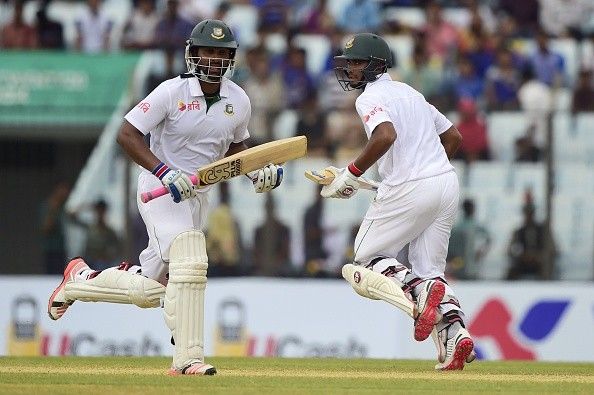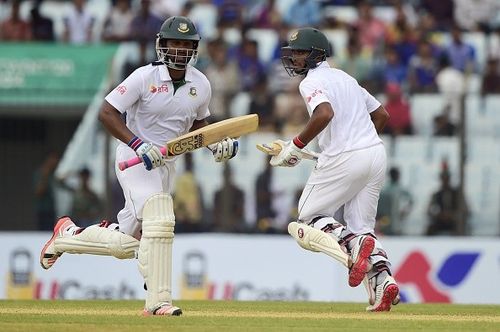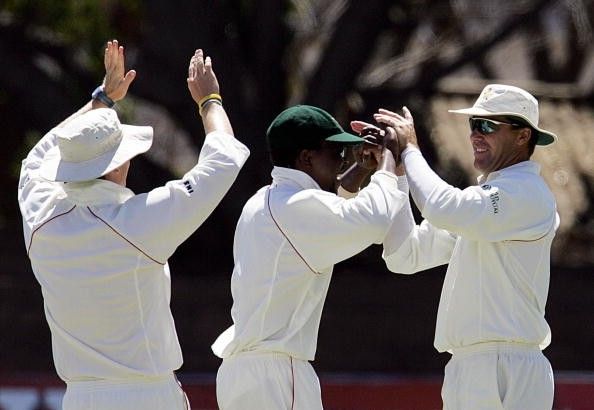
Is it time for cricket to adopt a Two-Tier system?
It’s strange how humanity will be better off without the caste system and sport will be better off with its inclusion. In the juggernaut of cricket, amidst revenues, the glitz and glamour of T20, experiments like Day-Night cricket and contentious topics like the size of the next World Cup, it is very easy to lose sight of the goal – to expand the game to the far-off corners of the world.
It is incredible that a game that has been played for nearly 150 years still boasts of just 10 regular nations along with a bevy of others which rise to the fringes and then fade away – Kenya being an excellent example, ringing a sonorous bell for Test status one moment, reaching the 2003 semi-final and then literally being wiped out of the cricketing radar.
Ireland and Netherlands could chart a similar destiny if ICC doesn’t act.
There were talks more than a year ago on whether a two-tier system might be the way to go at least for the game’s longest format, to ensure that the crowd numbers do not dwindle further because of the exodus to more interesting shorter contests that seem to be more competitive.
There was talk of three permanent member boards too – India, Australia and England – something that irked other member nations.
The current position
ICC currently has 10 Full Members, which are eligible to play Tests, 38 Associate Members and more than 50 Affiliate Members. Bangladesh was the last country to be promoted as Full Member – a step that has cost many other ambitious countries of Kenya’s ilk in the longer run.
Bangladesh took so long to come to terms with Test cricket that they were mincemeat for a lot of other cricketing powerhouses. Bangladesh has played 93 Tests since its induction in 2000 following a great show at the World Cups. Many felt they were hurried into the Test playing cordon. In the next decade and a half, they have won just 7 Tests and lost a whopping 71, with only 15 draws – still not able to manage the ‘corridor of uncertainty’ reasonably well!
Only in 2015 did Bangladesh really come to the international standards of competing with the stronger teams, that too in ODIs, where their impressive home showing included three series wins against Pakistan, India and South Africa with a quarter-final showing at the 2015 World Cup - to add to the whitewash of New Zealand half a decade ago and lend that more credibility.
However, Bangladesh’s Test performances over a decade meant that the ICC went into full-caution mode – something that is costing Ireland a lot of enthusiasm. It remains to be seen how much longer Ireland continue to fight and push for the full-member spot, especially with talks of a trimmed, leaner, meaner World Cup in 2019.
How does a two-tier system work?
Anyone who watches club football will understand how the two-tier system works. Effectively it separates teams actively competitive, into two categories. Every year, the bottom-placed teams of the top division are relegated to the second division and the toppers of the second division are given a chance to compete with the big boys.
Over the years, EPL has seen some scintillating romantic fairy tales when teams promoted to the top division showed their passion and enthusiasm and lit up the season.
The Two-Tier system has three advantages:
- It will keep the top Test playing nations on the edge considering no one really wants to go to the relegation zone. In fact, it will ensure that teams especially in the middle of the rankings table, take their Tests with lower ranked nations extremely seriously.
- It will ensure that nations like the Netherlands, Ireland, Afghanistan and Scotland, which have so much passion and skill to offer to cricket, will have a real goal and a tangible opportunity to showcase their gusto. Zimbabwe, for example, was briefly stripped off its full-member status before being reinstated after improvements.
- Full-Member status can bring glory and financial strength – a lifeline that many of the teams like Afghanistan can dearly do with. At the moment, some of these Associate Nations compete before major tournaments like ICC ODI World Cup and T20 World Cup. But the spotlight on their performances is gone the moment the tournament is over and they are relegated to oblivion. With a Two-Tier system, audience, cricket boards and players will always have one eye over who is doing poorly amongst the Full Members and who could probably replace them next year from the Associate group.
Constant decline of some teams
- There was a time when the Zimbabwe team had promise – costing India a semi-final berth in the 1999 World Cup. With players like Heath Streak, Andy Flower, Grant Flower and Alistair Campbell, they were posing steady challenges to top nations.
But, after political upheavals cost the cricket a leg and an arm in the country, they’ve never been able to recover, despite injections of enthusiasm and support from their Board in the form of good coaching staff every now and then.
Defeats to teams like Afghanistan must definitely hurt. What hurts the global cricket fan is that Zimbabwe cricket doesn’t have enough steam to retain players like Brendan Taylor who after years of serving the nation cannot be wronged for wanting to secure his future by taking up the Kolpak deal.
There are several such stories amongst Associate Nations with those players never even being talked about. That is where the Two-Tier System can really help when players have something to hang on to, the bait of being part of their country’s first Test team.
- West Indies is currently turning out to be the classic example of a nation in cricketing freefall. In the last 10 years, West Indies has played 87 Tests, won only 15, drawn 27 and lost 44 – more than 50% of their matches.
Of these, only 4 wins have come away from home – 3 of them against Bangladesh (with a lone win against South Africa). However, it is not so much their win/loss ratio that is alarming as is the callousness of their Board, which constantly has catfights with its players, who even pulled off mid-tour over wages – that cost the Board its relationship with cricket’s most powerful body, BCCI, earning them the latter’s ire and rightly so.
The manner of defeats is equally debilitating for the spirit of the passionate fan, who saw West Indies’ glory years. West Indies are being hammered by Australia, even as we speak.
Even good teams like India and England have gone through this – but West Indies’ innings and 212 runs, followed by a 177 run loss (where they took all of 6 Australian wickets in both innings put together), coming on the back of a series loss at home to Australia (India and England redeemed themselves there) and we know there is a problem.
Current ICC Ranking
The current ICC Rankings make for interesting viewing. It is crowded at the top with 8 rating points separating the top 4 teams - South Africa (114), India (110), Australia (109) and Pakistan (106).
England and New Zealand are tied at 99 (England on the verge of a draw in South Africa in the second Test at the time of writing as they continue to do well on this tour). Sri Lankan (89) cricket has suffered because of the exodus of top cricketers but the bottom three make for disappointing reading – West Indies with 76 points, Bangladesh with 47 points and Zimbabwe with 5 points.
Clearly, there is daylight not just between top and bottom placed teams but between bottom placed teams and teams in the middle of the table.
The disadvantages of Two-Tier System – Test cricket takes time
There are two major disadvantages with the Two-Tier system.
Teams like Bangladesh, which are placed below West Indies, are currently gathering steam. If relegated at this point of time, it could be a death knell that will cause fizzling of the excitement, even though a case can be made that most of the passion of the average Bangladesh fan is reserved for the shorter formats of the game.
Similarly, Relegating teams like Zimbabwe could almost mean annihilating cricket in that country, considering they are already fighting tooth and nail for more matches and better resources to attract the audiences.
The second disadvantage is obviously fixing upon a time-limit for which a team is promoted to the top tier or demoted to the second one. Given the nature of Test cricket, we cannot afford to relegate teams or promote them every year like in club football.
It takes time to build a good Test team and a generation of good Test players, like Bangladesh might have realised. Chopping and changing could spell trouble and teams will never learn unless they encounter massive defeats at the hands of strong teams, given the real mettle of a team is tested in Test cricket where there is nowhere to hide over 5 days.
Conclusion and suggestions
Between giving the Associate Nations ample incentives to aspire for and challenging the Full Members to get their act right and avoiding incentivizing or catalysing the diminishing fortunes of Test cricket itself with one-sided matches, the ICC has a tough job on its hands. Only England boasts of full-house audiences at the moment for Test matches.
- One way to go would be for Full Members to play a Test against one of four selected Associate Nations every year – an unofficial Test that doesn’t hurt Test cricket with one-sided results but also gives countries like Ireland and Afghanistan, an opportunity to play 5-day cricket. That taste could be delectable.
- Another way would be to reduce the number of bilateral series bottom-placed teams are allowed to participate in to reduce the number of meaningless one-sided games.
- It may not be a bad idea to have a Test Championship to infuse some excitement in the Test arena where the top 2, 3 or even 4 teams could battle it out every two years for a Trophy.
- At the same time, the bottom two teams will compete with the top 2 Associate nations in another Test Championship where there is pride to be salvaged. This will ensure that ICC has a good measure of where the Associate Nations exactly lie as far as Test standards are concerned.


